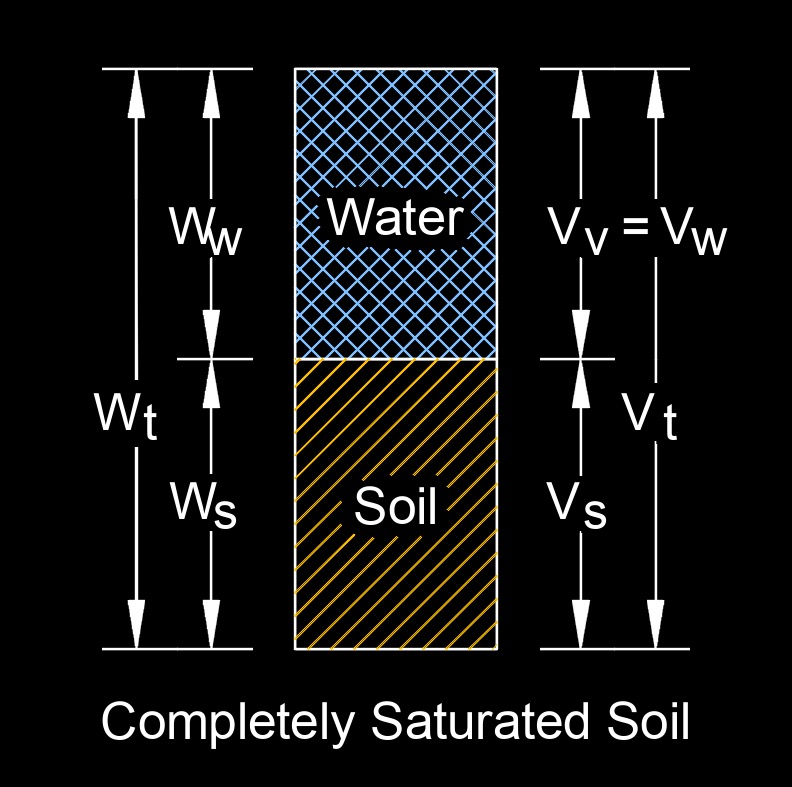Saturated Unit Weight
Saturated Unit Weight Formula |
||
|
\( \gamma_{sat} \;=\; \dfrac{ W_t }{ V_t }\) (Saturated Unit Weight) \( W_t \;=\; \gamma_{sat} \cdot V_t \) \( V_t \;=\; \dfrac{ W_t }{ \gamma_{sat} }\) |
||
| Symbol | English | Metric |
| \( \gamma_{sat} \) (Greek symbol gamma) = Saturated Unit Weight | \(lbf \;/\; ft^3\) | \(N \;/\; m^3\) |
| \( W_t \) = Total Weight of Soil | \(lbf\) | \(N\) |
| \( V_t \) = Total Volume of Soil | \(ft^3\) | \(m^3\) |
 Saturated unit weight, abbreviated as \(\large{ \gamma_{sat} }\), is the weight or density of a soil or sediment when it is fully saturated with water. It is an important parameter in geotechnical engineering and soil mechanics, as it helps in understanding the behavior of soils and their ability to bear loads or withstand external forces.
Saturated unit weight, abbreviated as \(\large{ \gamma_{sat} }\), is the weight or density of a soil or sediment when it is fully saturated with water. It is an important parameter in geotechnical engineering and soil mechanics, as it helps in understanding the behavior of soils and their ability to bear loads or withstand external forces.
In practical applications, the saturated unit weight is essential for designing foundations, retaining walls, and other geotechnical structures. It helps engineers assess the stability and settlement characteristics of soils under different moisture conditions. When soils are fully saturated, they tend to have reduced shear strength and may undergo consolidation, leading to settlement. Understanding the saturated unit weight is crucial for making informed engineering decisions.

